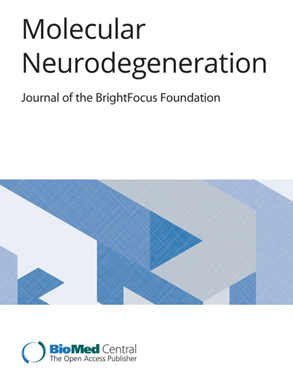Alpha-synuclein seeding amplification assays in Lewy body dementia: a brief review
IF 17.5
1区 医学
Q1 NEUROSCIENCES
引用次数: 0
Abstract
Lewy body dementia (LBD), which includes dementia with Lewy bodies (DLB) and Parkinson’s disease dementia (PDD), is characterized by cognitive decline, sleep disturbances, motor dysfunction, and other debilitating clinical symptoms. Neuropathologically, LBD is characterized by the progressive accumulation of alpha-synuclein (aSYN) in vulnerable cellular populations in the brain. Diagnosing LBD is challenging due to the overlap of clinical symptoms with Alzheimer’s disease (AD) and other neurodegenerative disorders with current diagnostic tools, including clinical examinations by specialized neurologists and brain imaging, limited by accessibility. Taken together, LBD is often misdiagnosed, especially at early disease stages. Seed amplification assays to detect pathogenic aSYN (aSYN SAAs) are emerging as promising tools to detect aSYN pathology in biological specimens. These assays amplify trace amounts of misfolded aSYN, enabling their potential detection in brain, CSF, saliva, skin, and blood. This review compares the sensitivity and specificity of aSYN SAAs across different biological samples and explores the potential of the assay as a diagnostic in LBD. We also highlight challenges that will need to be addressed going forward if the aSYN SAA is to be widely adopted as a diagnostic test. Despite current limitations, aSYN SAAs hold promise for early and precise diagnosis, paving the way for targeted treatments that could significantly improve patient care and outcomes.路易体痴呆中α -突触核蛋白种子扩增试验:综述
路易体痴呆(LBD)包括路易体痴呆(DLB)和帕金森病痴呆(PDD),其特征是认知能力下降、睡眠障碍、运动功能障碍和其他使人衰弱的临床症状。神经病理学上,LBD的特征是α -突触核蛋白(aSYN)在大脑易损细胞群中的渐进式积累。诊断LBD具有挑战性,因为目前的诊断工具(包括专业神经科医生的临床检查和脑成像)与阿尔茨海默病(AD)和其他神经退行性疾病的临床症状重叠,受可及性的限制。总之,LBD经常被误诊,特别是在疾病的早期阶段。用于检测致病性aSYN (aSYN SAAs)的种子扩增试验正在成为检测生物标本中aSYN病理的有前途的工具。这些检测扩增微量错误折叠的aSYN,使其在脑、CSF、唾液、皮肤和血液中具有潜在的检测潜力。这篇综述比较了aSYN SAAs在不同生物样品中的敏感性和特异性,并探讨了该检测作为LBD诊断的潜力。我们还强调了如果aSYN SAA被广泛采用为诊断测试,将需要解决的挑战。尽管目前存在局限性,但aSYN SAAs有望实现早期和精确诊断,为有针对性的治疗铺平道路,从而显著改善患者的护理和结果。
本文章由计算机程序翻译,如有差异,请以英文原文为准。
求助全文
约1分钟内获得全文
求助全文
来源期刊

Molecular Neurodegeneration
医学-神经科学
CiteScore
23.00
自引率
4.60%
发文量
78
审稿时长
6-12 weeks
期刊介绍:
Molecular Neurodegeneration, an open-access, peer-reviewed journal, comprehensively covers neurodegeneration research at the molecular and cellular levels.
Neurodegenerative diseases, such as Alzheimer's, Parkinson's, Huntington's, and prion diseases, fall under its purview. These disorders, often linked to advanced aging and characterized by varying degrees of dementia, pose a significant public health concern with the growing aging population. Recent strides in understanding the molecular and cellular mechanisms of these neurodegenerative disorders offer valuable insights into their pathogenesis.
 求助内容:
求助内容: 应助结果提醒方式:
应助结果提醒方式:


